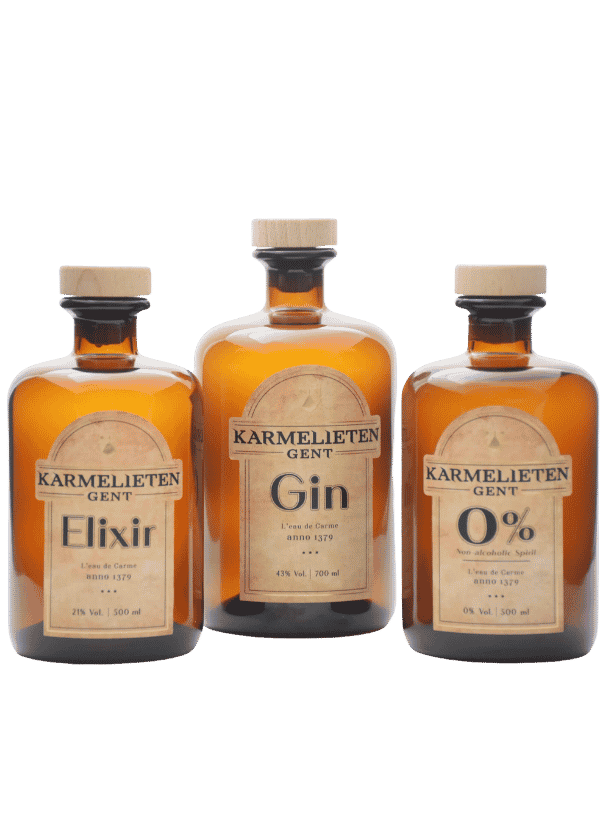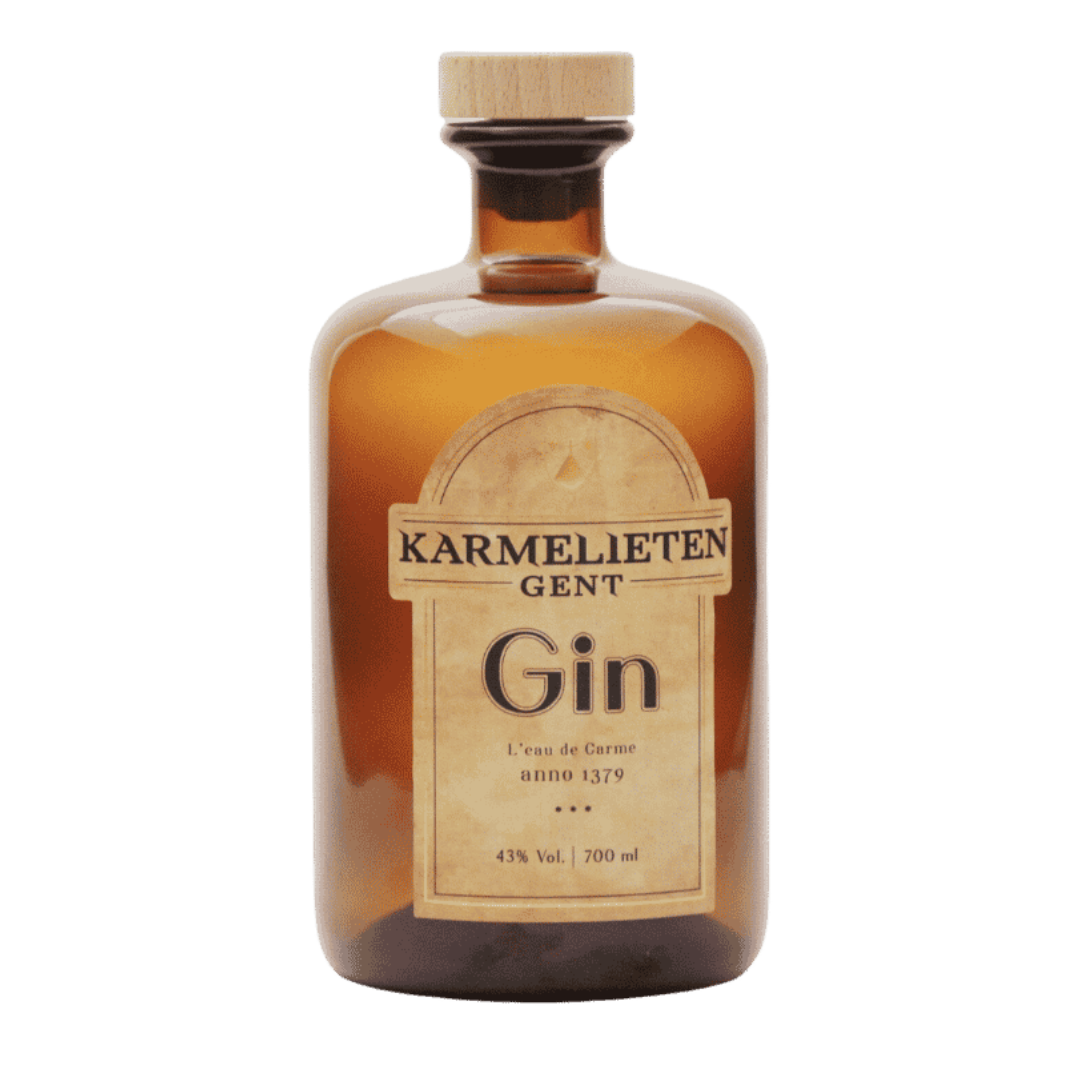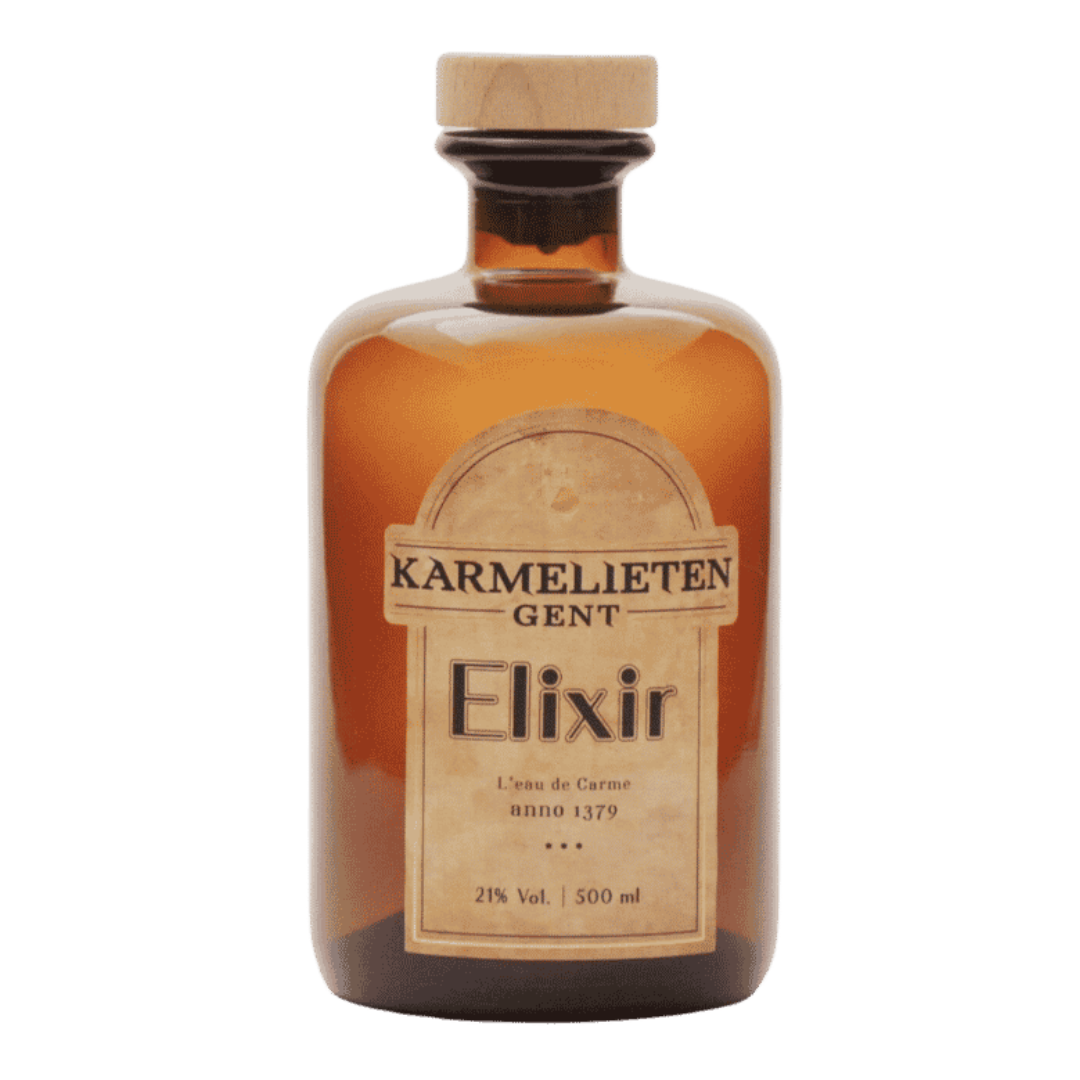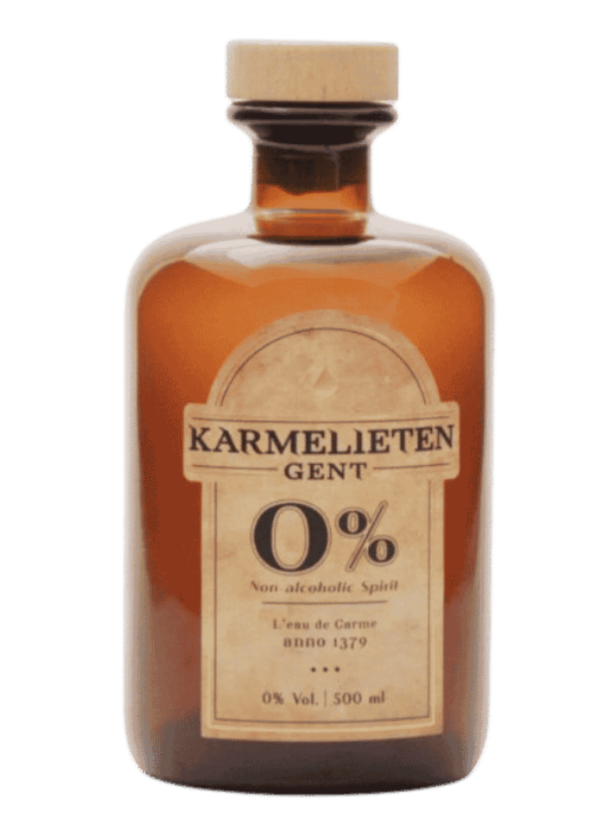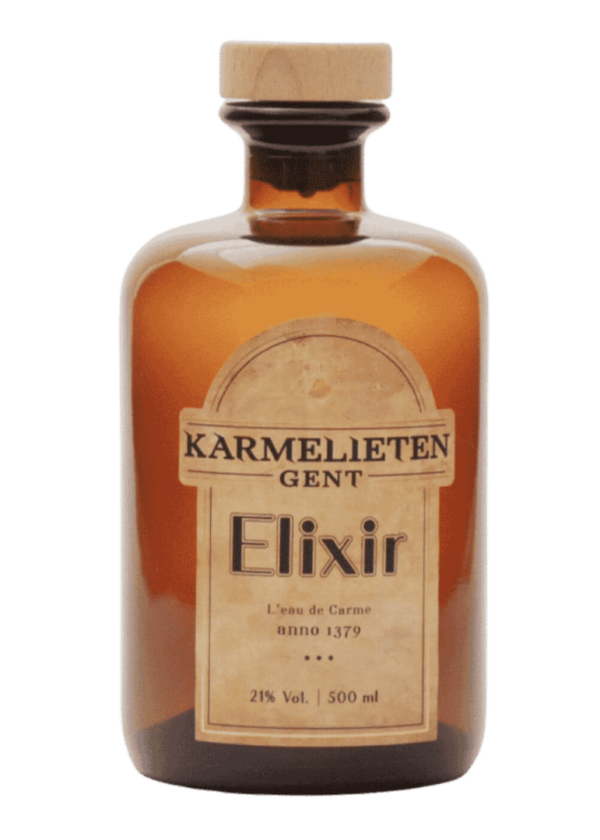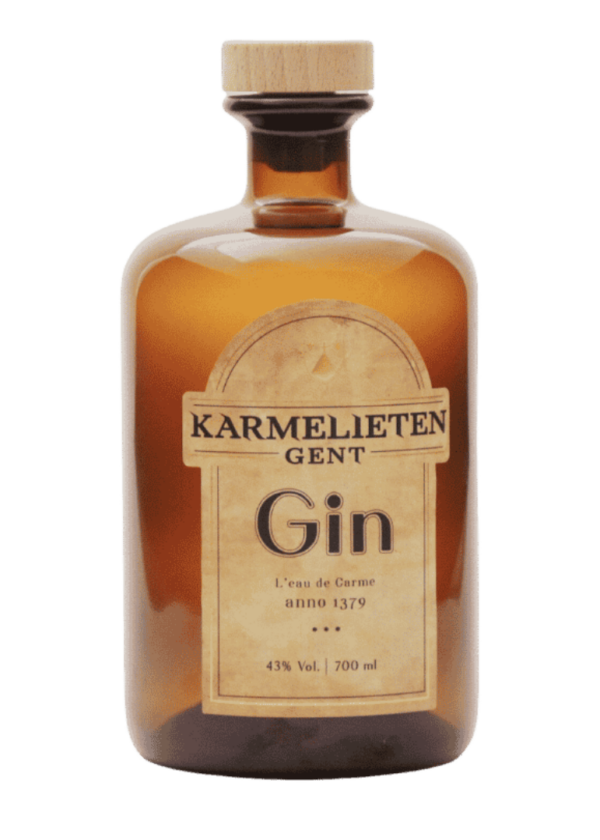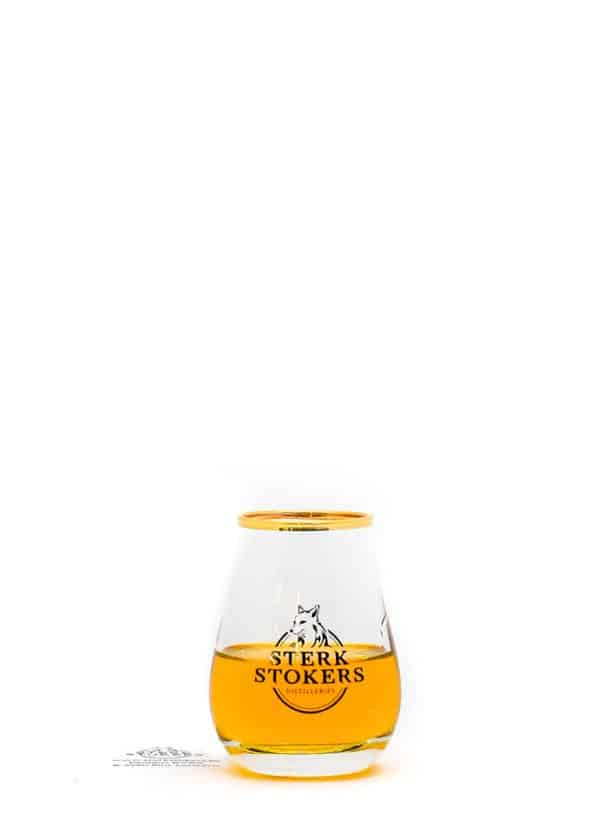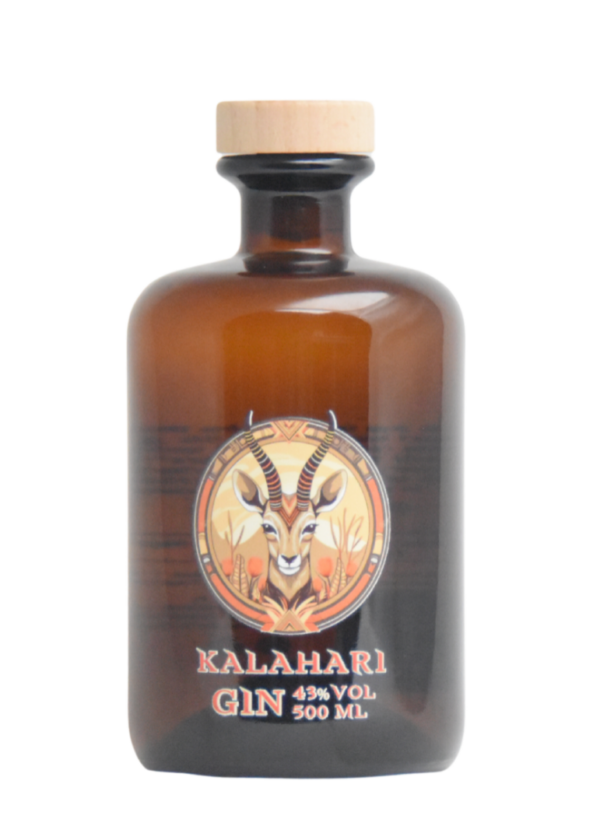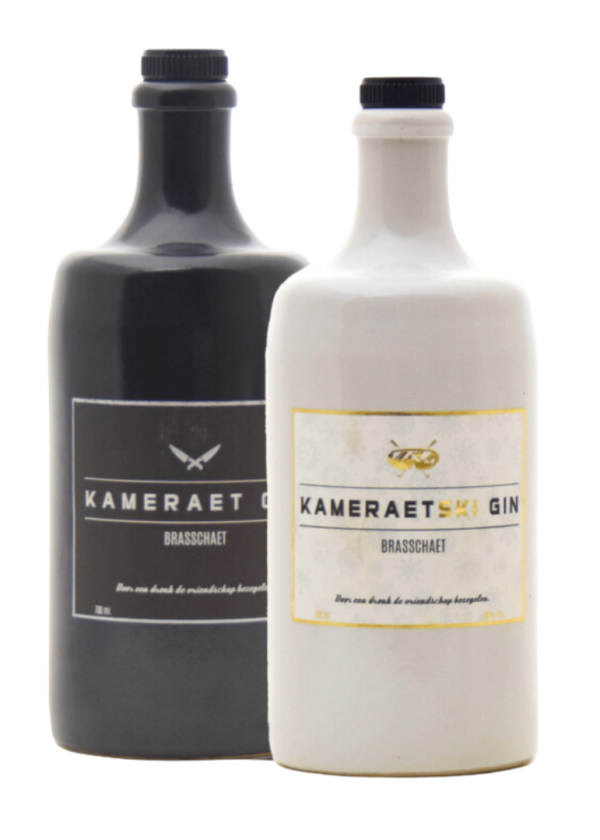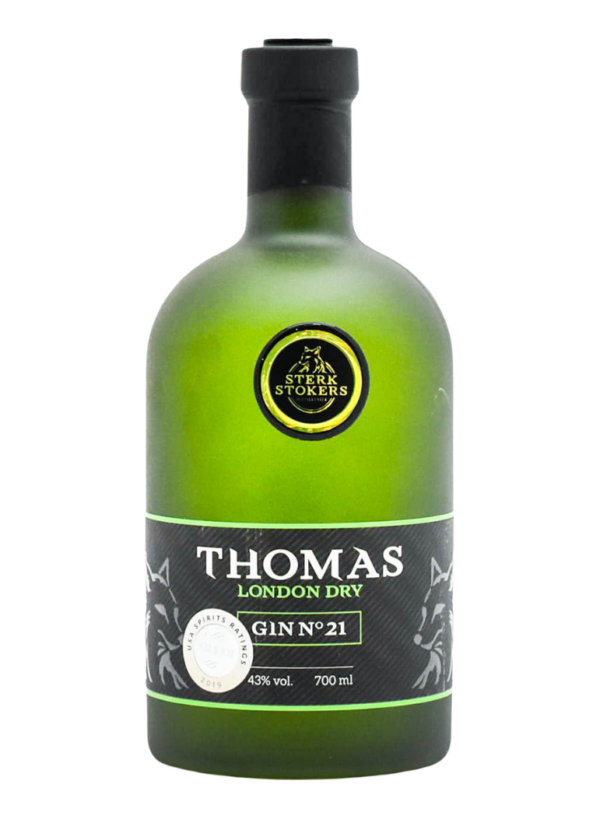Carmelites – Gin, 700 ml, 43% vol. – Liqueur, 500 ml, 21% vol. – Non-alcoholic beverage, 500 ml, 0% vol.
€ 79,00
The three Carmelite drinks together.
- Carmelites bundle pack – Gin, 700 ml 43% vol. – Elixir/liqueur, 500 ml, 21% vol. – Alcohol free, 500 ml, 0% vol.
- Description
- Additional information
Description
AN ANCIENT HISTORY
The Carmelites are one of the oldest monastic communities of the Catholic Church. They get their name from Mount Carmel where the first monastics lived. In the 13th century, Carmelites migrated to Europe and city monasteries sprang up everywhere.
CARMEL MONASTERY
The oldest surviving Carmel monastery in Belgium, indeed in the world, is located in the center of Vilvoorde. It was founded in 1469 as one of the first monasteries in the Carmel Order, even before Teresa of Avila would initiate her great reforms from which a new monastic order emerged (called Discalced Carmel).
THE CHARLES
In the 20th century, the sisters still joined the Teresian Carmel family. Vilvoorde’s Carmel is best known as a pilgrimage site for Our Lady of Consolation. The first Carmelites were also known in Flanders as the “Carmers” or “Caermers. We still encounter that name in the former monastery in Ghent’s Patershol district, which now houses the Kunsthal Gent.
BRUGES
A few years after the start of the sister communities, the male branch of the Teresian Carmel also came to Flanders. In 1630, the first fathers occupied a house in Bruges. Three years later they moved into the monastery on Donkey Street, which is still a Carmel community. They were not really welcome in ecclesiastical Bruges because this new monastic order meant more competition for the fathers of the older orders. They made their money partly from donations for celebrations and were not waiting for an additional “player” in the city’s Catholic life.
Nevertheless, the Carmelite Fathers managed to win the hearts of Bruges residents by volunteering to support the plague sufferers, who had to live in quarantine because of their contagious disease. Nine brothers and fathers lost their lives in the process.
PRINSENHOF
In Ghent, too, the Fathers were received with mixed feelings, but they had powerful protection from Archduke Leopold. They bought in 1651 a piece of land on the edge of the former Prinsenhof, where the court of the Counts of Ghent resided. There the Fathers began building the monastery and church on Burg Street. Archduke Leopold donated a vault to the new monastery, where the fathers could retire individually for prayer. Now the vault is also accessible to outside visitors and can even be rented for short stays.
The present monastery complex still contains numerous details that recall the building’s more than five centuries of history. In addition to the monasteries in Bruges and Ghent, the Carmelite Fathers are also based in Berchem and have good ties with Carmel monasteries in Denmark and Sweden, which were originally Belgian foundations.
THE APPROVED VIEW OF KAREL V
At the back of the Carmel cloister garden in Ghent is a structure that recalls a famous neighbor of the Fathers, although he was long deceased when the Carmelites settled in the city. The cradle of the later Emperor Charles V (1500-1558) was in the Prinsenhof, which also included one of the oldest zoos in Europe. That little building of the Fathers bears the name Leeuwenhof, and was part of the place where the wild animals were housed.
Emperor Charles V reportedly loved good food so much that he drank a glass of the Carmelite water daily so that his stomach could settle down a bit. As the Carmelite Fathers in Ghent reintroduce this Eau des Carmes, they are counting on an approving glance from their old neighbor Charles.
Gin
The gin is the basis for a delicious aperitif. When combined with tonic, it creates a unique cocktail in which the past and present are a perfect match. According to the records at Carmelites, we let the herbs macerate for 24 hours (a natural process in which the herbs soak in a liquid such as alcohol) before distilling them. Originally the Carmelites distilled in stone columns, today we use modern distillers.
Elixir
The Carmelites’ original recipe for their Carmelite water was so potent, and bitter, that users mixed it with a spoonful of honey or drizzled a lump of sugar. The combination of bitter and sweet is a powerful experience. When working out the recipes, we test the original herbal recitation in combination with sweet. No calorie-rich sugar, but stevia. The extra spiciness of the stevia match great with the rest of the spices.
Alcohol free
When you’re looking for a tasty aperitif but don’t feel like alcohol, our Carmelites 0% offers a perfect solution. The preparation of these herbal distillates like gin lends itself perfectly to a non-alcoholic version. When combined with tonic, it creates a spicy and rich cocktail. You don’t know what you’re tasting!
0% alcohol | 0% added sugar | 100% real life water
Perfect serve
Gin:
- 6 cl Carmelite gin
- 200 g Ice cubes
- 150 cl Soft indian tonic
- Finish with zest of lemon, dried lemon slice, juniper berries, sprig of lemon balm
Elixir:
- 5 cl Carmelite elixir
- 1 cl Salty Caramel rum
- 15 cl Ginger ale
- 150 g Ice cream
- Slice of dried lemon
- Leaf of lemon balm
Alcohol free:
- 6 cl Carmelites 0%,
- 200 g Ice cubes
- 150 cl Powerful indian tonic.
- Zeste of lemon
- Slice of lemon, juniper berries, sprig of lemon balm, marigold
Carmelites bundle pack – Gin, 700 ml 43% vol. – Elixir/liqueur, 500 ml, 21% vol. – Alcohol free, 500 ml, 0% vol.
Additional information
| Type | Gin, Elixir, Alcohol free 0%, Bundle package |
|---|---|
| Volume | 700 ml, 500 ml, 50 ml |
You may also like…
-
Carmelites – non-alcoholic beverage – 0% vol.
-
Carmelite Elixir – Liqueur – 21% vol.
-
Carmelites – Gin – 700 ml – 43% vol.

